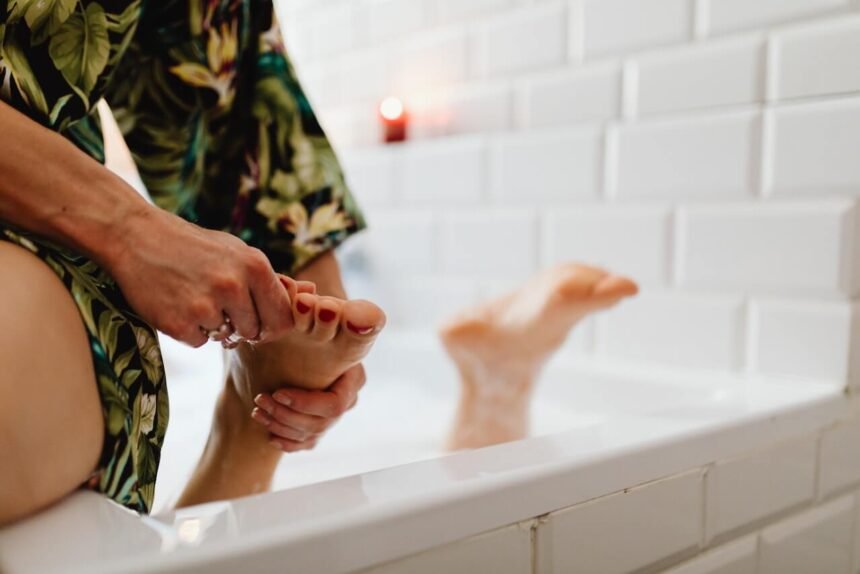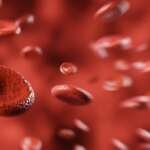Toe cramps are a common foot problem that affects people of all ages and may be quite bothersome. Toe cramps, or involuntary muscular contractions or spasms, may vary from moderately annoying to excruciatingly painful.
Toe cramps may have a variety of causes, depending on the individual, but there are a few consistent risk factors. This article’s goal is to investigate the possible origins of toe cramps in order to better understand this common problem and provide suggestions for avoiding and treating it.
1. Dehydration
Dehydration may be a major cause of toe cramping. Muscle function may be negatively impacted by a shift in electrolyte balance brought on by dehydration. Toe cramps may occur when the body is dehydrated and the toe muscles spasm involuntarily.
Dehydration may cause cramping in the toes, so it’s important to stay hydrated throughout the day by drinking plenty of water.
2. Nutritional Deficiencies
Toe cramps are a common symptom of a deficiency in key minerals and vitamins. Magnesium, potassium, and calcium are three examples of electrolytes that are essential for muscular contraction and function. Muscle spasms and cramps may result from a lack of certain nutrients.
Eating foods like bananas, leafy greens, almonds, and dairy products that are high in these minerals will help minimize the frequency with which you get toe cramps.
3. Muscular Fatigue and Overexertion
Foot and toe cramps are caused by overuse or tension on the muscles of the feet and toes. Muscle fatigue and spasms may result from doing things like walking or standing for lengthy periods of time or doing other motions repeatedly.
Toe cramps may also be caused by wearing shoes that don’t fit properly or high heels that put pressure on the feet. Muscle tiredness may produce painful cramping in the toes, but getting enough rest and wearing shoes that fit correctly might help.
4. Nerve Compression and Dysfunction
There are a number of medical disorders that may cause nerve compression or dysfunction, including peripheral neuropathy, diabetes, and nerve entrapment syndromes like Morton’s neuroma. A disruption in foot nerve function may cause muscle spasms and cramps by interfering with the brain’s ability to send signals to the body’s muscles.
To effectively treat toe cramps caused by nerve problems, it is essential to manage the underlying ailment and see a doctor.
5. Exercise-Induced Cramps
Toe cramps are often brought on by exercise or other strenuous physical activities. This is often linked to a lack of appropriate warm-up and stretching, dehydration, or an electrolyte imbalance.
Preventing exercise-related toe cramps may be accomplished by warming up properly, drinking enough of water, and keeping a healthy electrolyte balance.
6. Medications and Medical Conditions
Muscle cramps, particularly cramps in the toes, may be caused by a disruption in electrolyte balance, which can be caused by drugs including diuretics, statins, and beta-blockers. Cramping in the toes may also be caused by medical illnesses such as hypothyroidism, renal disease, and circulation issues.
These causes of toe cramps may be treated by talking to a doctor and, if required, making adjustments to your prescription.
7. Cold Temperatures
Prolonged exposure to cold may cause blood vessels to narrow, reducing blood flow to the extremities. Toe cramps are caused by a lack of oxygen and nutrients reaching the toe muscles.
In cold weather, toe pains may be avoided by keeping feet warm and wearing shoes that provide enough insulation.
8. Hormonal Imbalances
Muscle cramps, including those in the toes, are often brought on by hormonal changes, especially in women. Cramps are more likely to occur when hormone levels fluctuate, such as during menstruation, pregnancy, or menopause.
Toe cramps may be mitigated by following a healthy lifestyle, engaging in regular activity, and seeking medical attention if required.
9. Foot Arch Abnormalities
Pes planus (flat feet) and pes cavus (high arches) are two examples of foot arch deformities that may cause undue stress on the foot’s ligaments and muscles. Muscle imbalances and cramps are possible outcomes of this kind of stress.
Toe cramps are often caused by improper foot alignment, which may be alleviated by wearing shoes with arch support or by utilizing orthotic inserts.
10. Nerve Irritation or Injury
Toe cramps are often the result of nerve damage or entrapment in the foot or toes. Morton’s neuroma, in which a nerve in the foot gets inflamed and crushed, is one cause of the cramping and severe pain associated with the condition. Toe cramps caused by nerve irritation or damage may be relieved with prompt medical diagnosis and treatment.
11. Medications and Supplements
Muscle cramps, especially cramping in the toes, may be caused by diuretics, asthma drugs (such as bronchodilators), and even too much coffee or alcohol. Muscle spasms may occur if the electrolyte balance is disturbed by these chemicals.
Medications and supplements may cause toe cramps, so it’s important to talk to your doctor or pharmacist about the risks and benefits of using each before starting a new regimen.








